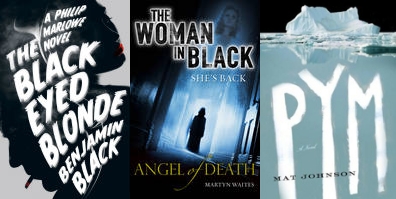Literary sequels
By the time of his death in 1959, Raymond Chandler had completed seven novels featuring his most famous creation, Philip Marlowe. But as with many other great literary heroes, the detective’s appeal has endured far beyond the lifetime of his creator. This year, Marlowe appears again in Benjamin Black’s The Black Eyed Blonde. The book represents the latest in a long line of literary ‘sequels’. Robert B. Parker has already written an ending for Chandler’s unfinished Poodle Springs, as well as his own original Marlowe novel. Martyn Waites has written a sequel to The Woman in Black, and Sherlock Holmes’s adventures have been continued by a number of writers, including Anthony Horowitz and A&B’s own Laurie R King.
The practice is also older than you might imagine. Some of the most notable works in this field are those inspired by Edgar Allan Poe’s 1838 novel The Narrative of Arthur Gordon Pym of Nantucket, the tale of a doomed voyage to the South Pole. On the face of it, the book would seem an unlikely classic. Written during one of the many low points in Poe’s troubled life, its narrative is rife with contradictions and plot holes. Yet in spite of these shortcomings, this slim work has inspired authors ranging from Hermann Melville to Henry James.

The ambiguity of its ending has also led several writers to attempt to provide a clearer explanation for the book’s many mysteries. The first was Jules Verne’s An Antarctic Mystery, in some ways an early form of fan fiction, but which lacked the surrealist elements of Poe’s story and managed to be even more racist than the original. More interesting was A Strange Discovery, by the little-known writer Charles Dake, in which the South Pole turns out to be ruled by descendants of the ancient Romans. The most recent attempt, and perhaps the best, has been Mat Johnson’s 2009 work Pym, which provides a satisfying resolution to the story while also cleverly subverting the racism of Poe’s text in its account of an African-American expedition to find the home of the fantastical black ‘savages’ encountered by Pym.
What do you think of the practice? Is there any value in these ‘sequels’?
Dominic Fagan, currently doing work experience at A&B


